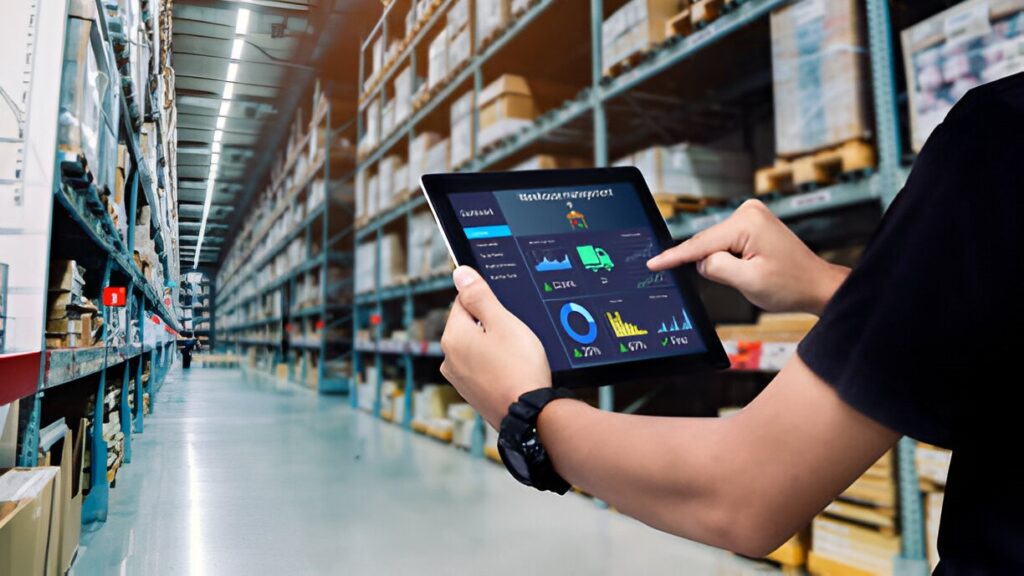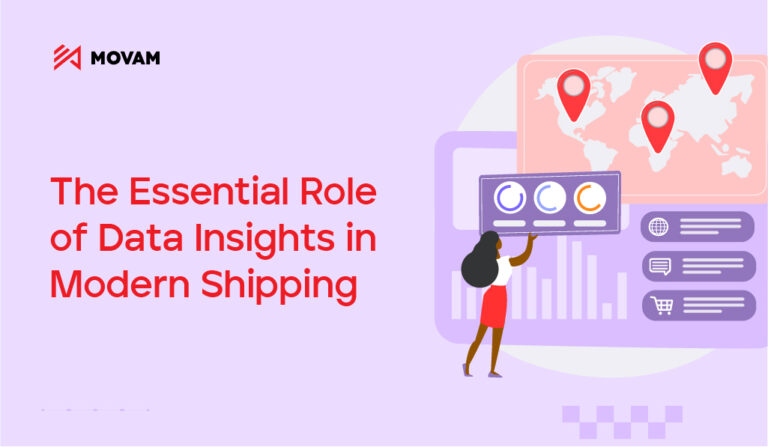In Africa, roads are the main means of transportation, carrying 80% of goods transported. As globalization speeds up and logistics get more complicated, the need for reliable and timely data has grown significantly. In recent years, the ability to use and analyze real-time data has become a key factor for companies that want to stay competitive. With global trade expanding and customer expectations rising, shippers are under more pressure to optimize their operations, cut costs, and improve delivery efficiency.
This article explores why data insights are important for shippers, focusing on real-time data, comparing it with historical data, and sharing best ways Movam uses these insights to improve logistics operations.
What Are Data Insights?
Data insights refer to the valuable information and understanding derived from analyzing raw data. In the shipping industry, data can be collected from various sources, including GPS systems, sensors on vehicles, shipment tracking systems, customer feedback, and more. By processing and analyzing this data, companies can uncover patterns, trends, and correlations that might not be immediately apparent. These insights can then be used to make informed decisions, predict future trends, and optimize operations.
Types of Data Insights
- Descriptive Insights: These insights provide a clear understanding of what has happened within the shipping process. For example, analyzing delivery times over a period can reveal patterns of delays and their causes.
- Diagnostic Insights: These insights question why certain events occurred. For example, if delays are frequent on a particular route, diagnostic insights might identify the root causes, such as traffic congestion or inefficient routing.
- Predictive Insights: Predictive insights use historical data to forecast future outcomes. For instance, by analyzing weather patterns and traffic data, companies can predict potential delays and take preventive measures.
- Prescriptive Insights: These insights suggest specific actions to optimize outcomes. For example, if a particular shipping route is consistently delayed, prescriptive insights might recommend an alternative route or changes in scheduling.
The Importance of Data Insights in Shipping
Data insights are crucial in shipping for several reasons:
- Operational Efficiency: By understanding the factors that influence delivery times, costs, and customer satisfaction, companies can streamline their operations to be more efficient. This can save you from joining businesses that lose up to $12.9million .
- Cost Reduction: Insights into fuel consumption, vehicle maintenance, and route optimization can lead to significant cost savings.
- Customer Satisfaction: With insights into customer preferences and behavior, companies can tailor their services to meet customer expectations, leading to higher satisfaction and loyalty.
- Risk Management: Data insights can help identify potential risks, such as delays, damages, or compliance issues, allowing shippers to mitigate them proactively.
Real-Time Data vs. Historical Data
The Role of Historical Data
Historical data refers to the information collected over time, typically stored in databases and used for analysis after the fact. In the shipping industry, historical data can include records of delivery times, fuel consumption, maintenance logs, customer feedback, and more. Historical data is invaluable for identifying long-term trends, understanding past performance, and making strategic decisions.
- Trend Analysis: Historical data allows companies to analyze trends over time, such as seasonal variations in shipping volumes or recurring delays on specific routes.
- Performance Benchmarking: By comparing current performance with historical data, companies can benchmark their operations and identify areas for improvement.
- Predictive Modeling: Historical data is often used to build predictive models, which can forecast future outcomes based on past patterns.
What is Real-Time Data
Real-time data, on the other hand, is collected and analyzed instantaneously, providing immediate insights into ongoing operations. In the context of shipping, real-time data can include GPS tracking of vehicles, live weather updates, traffic conditions, sensor data from vehicles, and more.

The real-time nature of this data allows companies to respond to events as they happen, making it a powerful tool for dynamic decision-making. Here are some of the ways real time data helps shippers:
- Immediate Decision-Making: With real-time data, companies can make decisions on the fly, such as rerouting a vehicle to avoid traffic or adjusting delivery schedules based on real-time conditions.
- Enhanced Visibility: Real-time data provides complete visibility into the current state of the supply chain, enabling better coordination and communication among stakeholders.
- Proactive Problem-Solving: By monitoring operations in real-time, companies can identify and address issues before they escalate, such as detecting a vehicle breakdown and dispatching a replacement.
Comparing Real-Time Data and Historical Data
While both real-time and historical data are valuable, they serve different purposes:
- Speed vs. Depth: Real-time data offers speed and immediacy, allowing for quick decision-making. Historical data provides depth and context, enabling a more comprehensive analysis of trends and patterns.
- Tactical vs. Strategic: Real-time data is often used for tactical decisions, such as adjusting routes or schedules in response to current conditions. Historical data is typically used for strategic decisions, such as long-term planning and resource allocation.
- Dynamic vs. Static: Real-time data is dynamic and constantly changing, reflecting the current state of operations. Historical data is static, representing past events that have already occurred.
In practice, the most effective shipping operations use a combination of both real-time and historical data. Historical data provides the foundation for understanding trends and building predictive models, while real-time data allows companies to adapt to changing conditions and make immediate decisions.
How Movam Uses data Insights to improve Logistics Operations
- Optimizing Delivery Routes with Real-Time Data
At Movam, we’re redefining efficiency by leveraging real-time data to optimize delivery routes. Our advanced GPS tracking empowers us to monitor deliveries in real time and make dynamic adjustments to avoid delays. our system ensures deliveries are always on the most efficient path.
- Enhanced ETAs: We provide customers with more precise delivery times, reducing missed deliveries and enhancing overall satisfaction.
- Enhancing Fleet Management with Real-Time Insights
- Enhancing Fleet Management with Real-Time Insight: Movam uses real-time data to drive smarter fleet management, helping us monitor every aspect of our vehicles and driver performance. This proactive approach minimizes downtime and maximizes the lifespan of your fleet.
- Driver Performance Monitoring: Our system tracks driver behavior in real time, enabling us to provide immediate feedback and improve safety on the road.
- Elevating Customer Experience with Real-Time Communication
In today’s fast-paced world, we know that customer experience is everything. That’s why Movam uses real-time data to keep customers informed and in control of their deliveries by providing:
- Real-Time Tracking: We offer customers real-time tracking, so they can see exactly where their delivery is, giving them peace of mind.
- Proactive Communication: Movam keeps customers in the loop with instant updates about delivery changes, building trust and enhancing satisfaction.
- Personalized Service: By understanding customer preferences through real-time data, we tailor our services to meet individual needs, leading to increased customer retention and loyalty.
- Managing Risks and Ensuring Compliance
Movam’s commitment to real-time data extends to risk management and regulatory compliance, helping us stay ahead of potential challenges.
- Risk Mitigation: We monitor shipments in real time to identify and address risks before they escalate, reducing supply chain disruptions by up to 54%.
- Regulatory Compliance: Our system ensures compliance with all relevant regulations.
Best Ways you can Leverage Movam Real-Time Data Insights
Invest in Cutting-Edge Technology

It’s essential to invest in the right technology. Movam’s advanced analytics solutions empower companies to make informed decisions quickly and effectively. Here’s how to ensure you’re set up for success:
- Integration: Seamlessly integrate Movam’s real-time data insights with your existing systems, including fleet management, warehouse operations, and customer service platforms.
- Scalability: As your business grows, so does your data. Movam’s technology is designed to scale with you, accommodating increasing data volumes without sacrificing performance.
Ensure Top-Notch Data Quality
Accurate and reliable data is the cornerstone of effective decision-making. Movam helps you maintain high data quality, ensuring that every insight you derive is actionable and trustworthy.
- Data Validation: Implement robust data validation processes with Movam to ensure that your data is accurate and reliable.
- Regular Audits: Conduct regular audits of your data systems with Movam’s tools to identify and resolve any issues that could compromise data quality.
Cultivate a Data-Driven Culture
To truly leverage Movam’s real-time data insights, fostering a data-driven culture within your organization is key. Encourage decision-making based on data, not intuition, and empower your team with the tools and knowledge they need.





